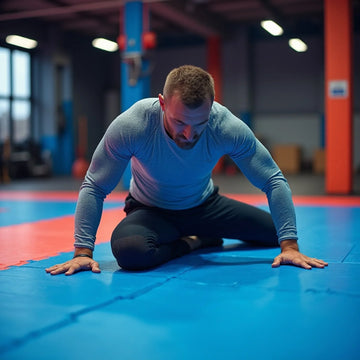How Rash Guards Prevent Skin Infections in BJJ: 2025 Guide
A rash guard is a tight, antimicrobial shirt that blocks sweat, scrapes, and bacteria—helping you avoid ringworm, staph, or MRSA infections while rolling in Brazilian Jiu-Jitsu.
- What Causes Skin Infections in BJJ
- How Rash Guards Act as a Protective Barrier
- Antimicrobial and Moisture-Wicking Fabrics
- Improving Hygiene: Cleaning and Care Tips
- Comparing Rash Guards vs Other Protective Gear
- Additional Health Benefits of Rash Guards
- Choosing the Right Rash Guard for Infection Prevention
- User Experiences and Expert Opinions
What Causes Skin Infections in BJJ
Brazilian Jiu-Jitsu is fantastic cardio, full-body workout, and technical dance all in one—but it’s also a prime breeding ground for skin infections. Mats, sweat, and close contact create the perfect storm. Tiny cuts or abrasions on your shoulder, knee, or elbow become doorways for bacteria to sneak in. Staphylococcus aureus (staph), strep, ringworm, and even MRSA love warm, damp spots. Skin infections in jiu jitsu rash guard use matters because friction and sweat rub off skin cells onto gear and mats. Then other athletes step on it, share the same space, and voilà—microbes spread.
Imagine you’ve just nailed a triangle choke, the mat feels slick, and your opponent’s gi rubs against your forearm. Now add a minute nick from a recent hit—suddenly you’ve invited bacteria to set up shop. The more friction from skin-to-skin contact, the higher your risk. That’s why tackling how to prevent skin infections in BJJ starts with reducing direct exposure. And yes, a good rash guard plays a starring role here—more on that shortly.
Some folks wonder, can rash guards prevent MRSA? While no single tool is infallible, consistent use of a rash guard for BJJ lowers the odds significantly. And pairing that with a solid post-class routine? You’re stacking the deck in your favor.
It helps to know what you’re up against:
- Staph infections: red, painful bumps that can turn into abscesses
- MRSA: antibiotic-resistant strain needing prompt medical care
- Ringworm: itchy, circular rash from fungal growth
- Folliculitis: inflamed hair follicles leading to small pustules
Knowing these culprits, you start to see why skin protection matters—and why the Bone Reaper Rash Guard might be more than just a cool design.
How Rash Guards Act as a Protective Barrier
Here’s the thing: a rash guard isn’t just stylish fightwear. It’s a living shield. That thin, stretchy fabric clings to your body, reducing skin-to-mat contact and scraping. By cutting down abrasion, you limit tiny openings in the epidermis where bacteria love to hide—especially in warm, moist crevices.
Why wear rash guard BJJ style? Because it covers areas prone to friction. Elbows, biceps, hips—all get a snug layer of defense. When you roll hard, sweat soaks the fabric, but moisture-wicking properties pull it away from your skin, keeping you drier. Less dampness means fewer breeding grounds for microorganisms.
Plus, many rash guards today include antimicrobial treatments—silver ions, zinc, or proprietary coatings—that actively inhibit bacterial growth. Think of it as chemical reinforcements behind the fabric wall. Over time, this reduces odor and lowers the risk of cross-contamination from one session to the next.
Of course, fit matters. Too loose and it flaps, generating friction. Too tight and it cuts off circulation. Ideally, a rash guard fits like a second skin—barely noticeable, yet always there. Just enough stretch to move freely, but close enough to block pesky intruders.
Looking for a recommended model? The Blessed Saint Rash Guard features flatlock seams and four-way stretch, giving you that perfect snug layer of protection.
Antimicrobial and Moisture-Wicking Fabrics
Not all rash guards are created equal. Fabric choice is where infection prevention really kicks in. Standard polyester or nylon blends wick sweat, but when you layer on antimicrobial finishes, you get extra bacteria protection. These finishes use silver ions or natural zinc compounds that interrupt microbial cell function.
Here’s what to look for in rash guard fabric antimicrobial features:
| Feature | Benefit | Example Gear |
|---|---|---|
| Silver-Infused Fibers | Stops bacterial growth at fiber level | Archangel Michael Rash Guard |
| Breathable Polyester Blend | Wicks moisture off skin | Generic poly-nylon rash guard |
| Flatlock Seams | Reduces fabric fold—less dirt catch | Pro competition rash guard |
| Odor-Blocking Treatment | Keeps gear fresher longer | Baphomet Seal Rash Guard |
Moisture-wicking alone can cut down bacterial colonization by up to 80%. Combine that with antimicrobial treatment, and you’ve got a top-tier rash guard for preventing infections. Always check the label—terms like “anti-odor,” “antimicrobial,” or “bacterial resistance” are your friends.
Are treated fabrics safe? Yes—most use FDA-approved minerals or food-grade silver. They’re built to last dozens of washes, though some high-end models retain their properties even after a hundred cycles.
Improving Hygiene: Cleaning and Care Tips
Even the best rash guard can only do so much. No magical garment replaces a solid post-class routine. For rash guard cleaning tips after BJJ, follow these simple steps:
- Rinse Immediately: As soon as you step off the mat, rinse in cold water to flush sweat and salt.
- Use Gentle Detergent: Opt for fragrance-free, enzyme-based soaps that break down oils without harming fabric treatments.
- Avoid Fabric Softeners: They can clog antimicrobial fibers and reduce moisture-wicking power.
- Air-Dry Flat: Hang or lay flat in shade. High heat from dryers degrades elastic fibers and antimicrobial finishes.
- Sanitize Weekly: Add a splash of white vinegar or a sports-gear sanitizer to one wash cycle per week.
Don’t let laundry day slide—dirty rash guards harbor bacteria. Store clean gear in a breathable bag or hang it in an open closet. Compressed gym bags trap moisture and accelerate microbial growth. Treat your rash guard like a precision tool, not just another shirt.
And those sneaky odors? If you notice lingering smells even after a wash, soak your rash guard in a solution of one part vinegar to four parts water for 30 minutes before laundering. It’s a simple hack that flushes out hidden bacteria.
Comparing Rash Guards vs Other Protective Gear
Rash guards often share the spotlight with gis, no-gi shorts, spats, and guards. But when it comes to skin infection prevention, the rash guard stands out. Let’s break it down:
| Gear Type | Coverage | Ease of Cleaning | Antimicrobial Features | Infection Protection |
|---|---|---|---|---|
| Rash Guard | High (arms, torso) | Machine wash, air-dry | Often built-in | Excellent |
| Gi Jacket | High (full top) | Machine wash, tumble dry | Rare | Good |
| No-Gi Shorts | Low (legs only) | Machine wash | Occasional | Fair |
| Elbow/Knee Pads | Targeted | Spot clean | No | Poor |
Rash guards outperform most alternatives because they combine broad coverage, antimicrobial finishes, and moisture control. Other gear might protect joints or reduce impact, but they rarely address full-contact microbial exposure.
If you’re weighing pros and cons of a rash guard for BJJ vs a traditional gi top, consider these points:
- Pros: better moisture wicking, antimicrobial treatment, reduced friction
- Cons: minimal padding, no lapel for collar grips
Additional Health Benefits of Rash Guards
Beyond bacteria protection, rash guards offer several perks that boost performance and comfort:
UV Protection: Many rash guards block UPF 50+ rays for outdoor grappling or beach training.
Muscle Support: The compression effect can reduce muscle vibration and fatigue.
Rash Prevention: They reduce chafing, preventing irritation on sensitive spots like inner thighs and armpits.
Temperature Regulation: Wicking fabrics help you stay warm when it’s cool and dry when it’s hot.
If you want a jam-packed design plus all these extras, check out the Black Rose Madonna Rash Guard. It’s a top pick for athletes who want style with serious function.
Choosing the Right Rash Guard for Infection Prevention
Picking the best rash guard for preventing infections isn’t just about eye-catching prints. Here’s what really counts:
- Fabric Tech: Look for antimicrobial or silver-infused blends.
- Fit and Stretch: Four-way stretch and flatlock seams reduce friction points.
- Durability: Reinforced stitching ensures treatments stay effective wash after wash.
- Breathability: Mesh panels or ventilated zones speed up drying.
- Coverage Level: Long sleeves and high necks provide maximum barrier.
Two standout options pushing all these checkboxes are the Against All Gods Rash Guard and the Angel of Death Rash Guard. Both offer serious antimicrobial action, dependable fit, and bold graphics to keep you motivated.
Finally, consider your training frequency. If you train daily, investing in two or three high-end rash guards keeps your rotation fresh and hygienic. If you train a couple times weekly, one solid piece may suffice—just follow those cleaning tips religiously.
User Experiences and Expert Opinions
Practitioners across skill levels consistently report fewer rashes and infections when they commit to rash guard routines. One coach notes that beginners often pick up ringworm more quickly—until they start wearing quality rash guards religiously. Dermatologists confirm that limiting direct skin contact and keeping moisture away are key strategies in preventing MRSA and other stubborn pathogens.
“I had persistent folliculitis until I switched to an antimicrobial rash guard and adopted strict washing habits,” says one purple belt. “Now I roll all week without worrying about post-class itch or red bumps.”
Experts agree that no single solution is foolproof—clean mats, personal hygiene, and gear rotation all matter. But a rash guard for BJJ remains one of the most effective, cost-efficient lines of defense.
In the end, investing in a high-quality rash guard and following simple hygiene protocols can dramatically reduce your risk of skin infections. From antimicrobial fabrics to moisture control, these garments shield you from bacteria every time you step on the mat.
Ready to protect your skin? Explore the latest antimicrobial rash guards, rotate your gear, and roll with confidence.
Updated: 08-18-2025










